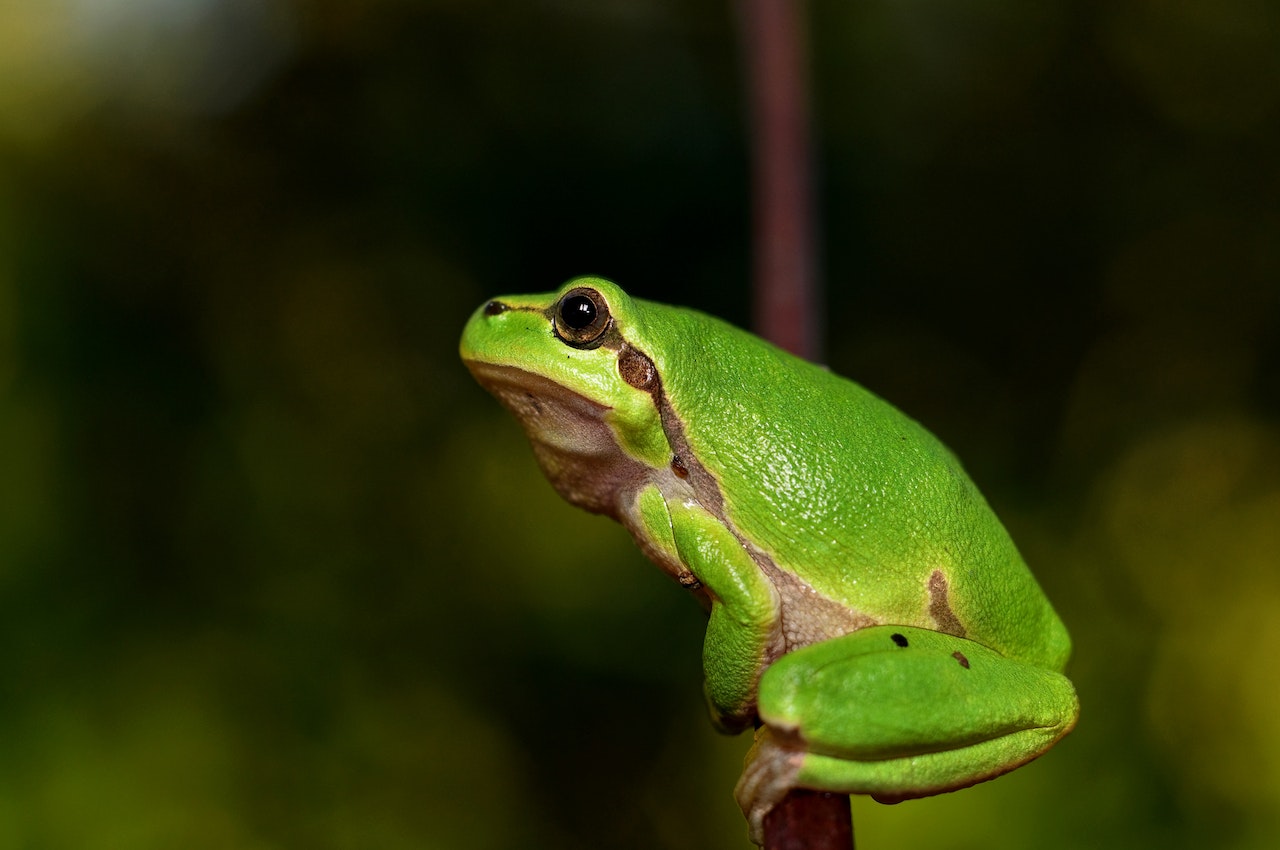Since axolotls and frogs both have aquatic lifestyles and are amphibians, one might think that the two species can be kept together.
Regularly the question comes up if you can keep axolotl with different frog species, mostly people think about Clawed Frogs and Dwarf Clawed Frogs.
Unfortunately, you can’ keep axolotls and frogs in the same tank. Both species have very different water temperature requirements and can easily injure each other.
What kind of animals are clawed frogs and dwarf clawed frogs?
Clawed frogs and dwarf clawed frogs both belong to the Pipidae family, also called “tongueless frogs” and originate from Africa, where they live in warm ponds.
Clawed frogs grow to 3,5 to 5,5 inches (9 to 14 cm) in size, while dwarf clawed frogs grow to around 1,5 inches (4 cm).
They are popular pets with aquarists and are often used as model organisms in research, partly because they are easy to keep and robust compared to other frog species.
3 Reasons why frogs and axolotl can’t live together
1. The temperature
Since clawed frogs originate in warm to tropical areas, they require water temperatures between 71 to 79 °F (22 and 26 °C). This is already way too warm for axolotls, which as cold water animals need temperatures of 53 to 68 °F (12 to 20 °C).
If the two species were kept together, it would either be clearly too warm for the axolotl or too cold for the frog.
2. Potential Injuries
Since both clawed frogs and axolotls are carnivorous animals, the smaller of them would quickly become prey.
The dwarf clawed frogs in particular are small enough that an axolotl may view them as food.
In addition, clawed frogs secrete a poison through their skin when they feel threatened, which doesn’t end well for the axolotl if it is about to eat a frog.
But the axolotl is also at risk of being eaten, as clawed frogs feed on worms, small fish, insects and amphibian larvae. Thus, a smaller or young axolotl can quickly end up on the menu of an adult clawed frog.
If the two animals don’t eat each other, the clawed frog poses yet another threat to the axolotl. As the name suggests, clawed frogs are equipped with claws on their first three toes, with which they can severely injure the skin of the axolotl.

3. Danger of parasites and diseases
In general, there is always a risk that new animals bring diseases or parasites into the aquarium.
But with clawed frogs the risk is even higher. They can, even without showing obvious symptoms, be infected with the chytrid fungus. The axolotl would quickly become infected with it and an infection often ends fatally.
Conclusion
Axolotls can generally only be successfully housed together with a few animals, which definitely doesn’t include frogs, toads or clawed frogs.
Apart from the different water temperatures, the animals would hurt or eat each other.
Axolotls are best kept alone or with other Axolotls, but if you still want to keep other animals in your Axolotl tank, dwarf shrimp and snails are a good choice. Here you can find an article about keeping Axolotl with dwarf shrimp and with snails.

